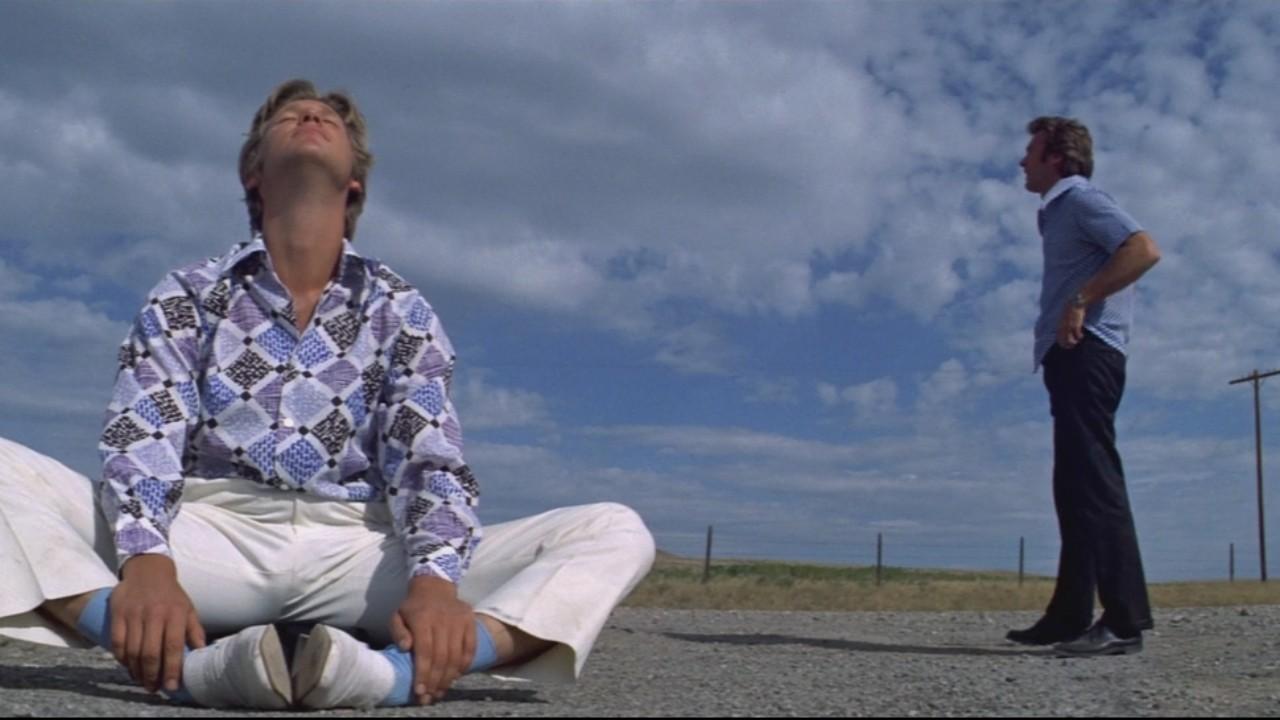Thunderbolt and Lightfoot
18 ¦ Blu-rayIt's curious how times change. In 1974 Clint Eastwood was already a star with not only his Spaghetti westerns out of the way, but also two Dirty Harry flicks under his considerable belt too. If he were an actor at that stage of his career today, he would be no doubt looking for projects with his name above the film's title, with his formidable frame in virtually every shot in what would most definitely be a Clint Eastwood vehicle.
But what Eastwood chose to follow up the success of Magnum Force - his second Dirty Harry outing - with was this curious project, opposite a young Jeff Bridges.
Whilst preaching to a small congregation in church in the middle of nowhere, a man enters and starts firing at the priest. The priest decides not to hang around and makes a run for it. As he makes it to the road, he leaps into a passing speeding car. Its driver is a young man that goes by the name of Lightfoot (Bridges).
Despite the priest garb, Lightfoot takes it that he isn't really a member of the cloth. That and the fact that they aren't often shot at. After spending some time together, Lightfoot discovers that his companion is none other than the notorious bank robber known as Thunderbolt (Eastwood).
Thunderbolt tells him about the big job that he and his crew pulled off some years back and where they stashed the large score. The pair drive to the location only to find that the building is no longer there. Although disappointed that the money was no more, Lightfoot manages to talk Thunderbolt into another big job, one that they could do together. Thunderbolt eventually agrees, but it's not the kind of job they can do alone. Luckily for them, the guy that's been shooting at him is an old friend of sorts, and could possibly be persuaded to join the crew.
So, with a newbie and disgruntled old pal on board, what could possibly go wrong?

Although Bridges accepted Eastwood's fascination with UFOs, it occasionally took its toll.
Although Eastwood was quite possibly the biggest star on the planet at the time, he was very generous in allowing the young Jeff Bridges to shine brightly for the entire film. There's no denying Eastwood's presence, but he's more than happy for Bridges to stir the pot with his vibrant turn as Lightfoot.
With Butch Cassidy and the Sundance Kid released a few years before, you can see its influence hang heavy on this directorial debut by Michael Cimino, which he also wrote. The film's two eponymous heroes are Butch and Sundance transposed to a modern day setting. Cimino even maintains a western feel with the picturesque settings of Montana. It's a pleasing homage though, and one that doesn't get in the way of the film.
The film itself is also an unusual yet pleasing hybrid for the time, being that it's a buddy, road and heist movie all rolled into one. The result is an intriguing mix but one that is wholly satisfying. Eastwood manages to convey a hefty presence without having to do that much - which is probably how he can agree to share the screen with a bit of a show-off – whilst Bridges gives a superb, carefree performance completely uninhibited, which is no doubt down to youthful exuberance. It's no wonder he got an Oscar nod for it.
There's also cracking support from George Kennedy and Geoffrey Lewis, who complete the criminal set.
Although the title suggests a film more akin to Smokey and the Bandit territory, Cimino's 1974 debut is a beautifully shot and surprisingly mature piece of work that is often both elegant and charming in equal measures. His next film after this was the Oscar-winning The Deer Hunter, which was soon followed by the highly ambitious yet flawed Heaven's Gate, the failure of which pretty much signalled the end of his promising career.
Eastwood, of course, is still going strong, and although he may not quite be the huge box office draw he once was, much like his performance in this film, he's still happy to put in a strong shift one or two steps back from the spotlight and still get noticed. With over sixty film appearances and over thirty five in the director's chair, it clearly works for him.
